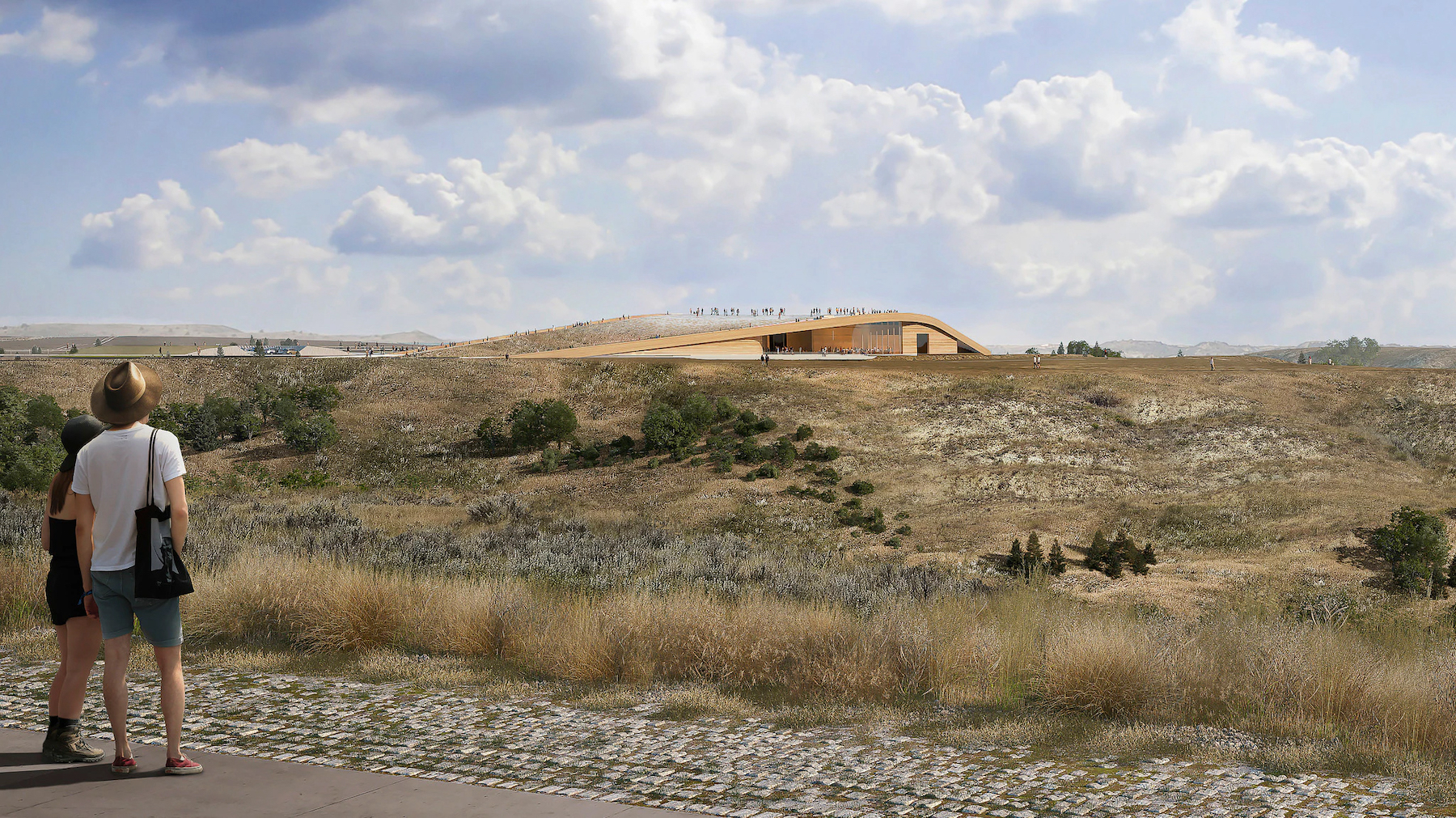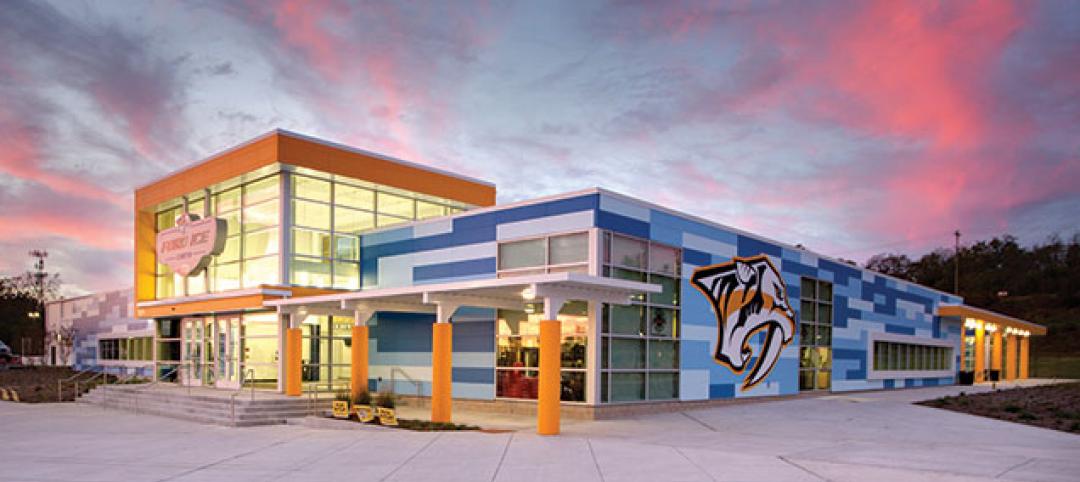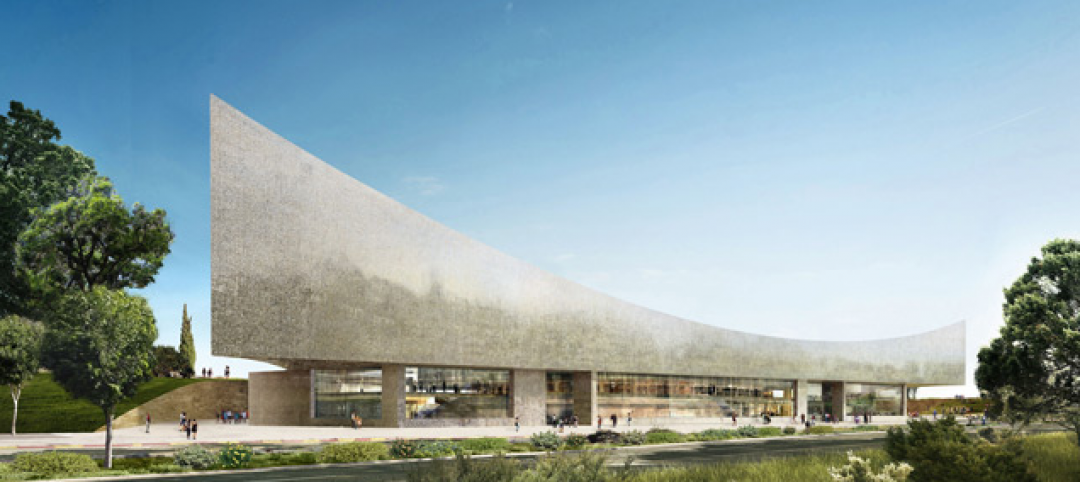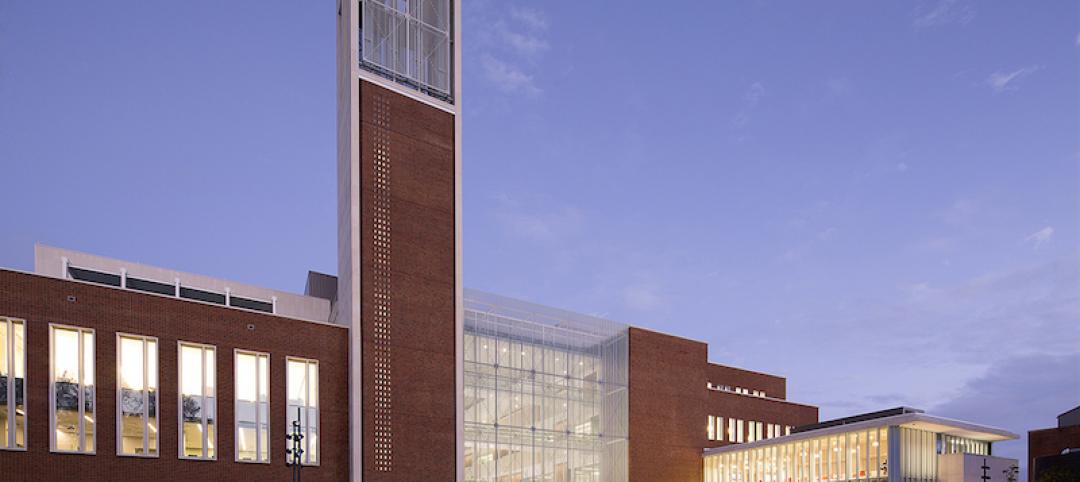On July 4, 2026, the Theodore Roosevelt Presidential Library is scheduled to open on 93 acres in Medora, a town in North Dakota with under 130 permanent residents, but which nonetheless has become synonymous with the 26th President of the United States, who lived there for several years in the 1880s.
The under-construction $333 million library, situated on a Badlands butte near the Burning Hills Amphitheater, will not be a repository for Roosevelt’s papers or archives (which are mostly housed at Harvard University). Instead, the library’s goal is to honor the President’s legacy as a conservationist. Its design is informed by Roosevelt’s interest in environmental stewardship and his reflections about the landscape.
The single-story, 93,000-sf library/museum “is a journey preserving the existing landscape of diverse habitats punctuated with small pavilions allowing for reflection and activity,” according to the project’s website. “The main building’s gently sloping roof looks to the northeast, gazing out to the [70,447-acre] National Park, historical settings in the Little Missouri River valley, and the Elkhorn Ranch far in the distance, further connecting the Library of tomorrow with its origins of the past.”
“The Library is the landscape,” Edward O’Keefe, CEO of the Theodore Roosevelt Presidential Library, told the New York Times.
Mass timber complements construction
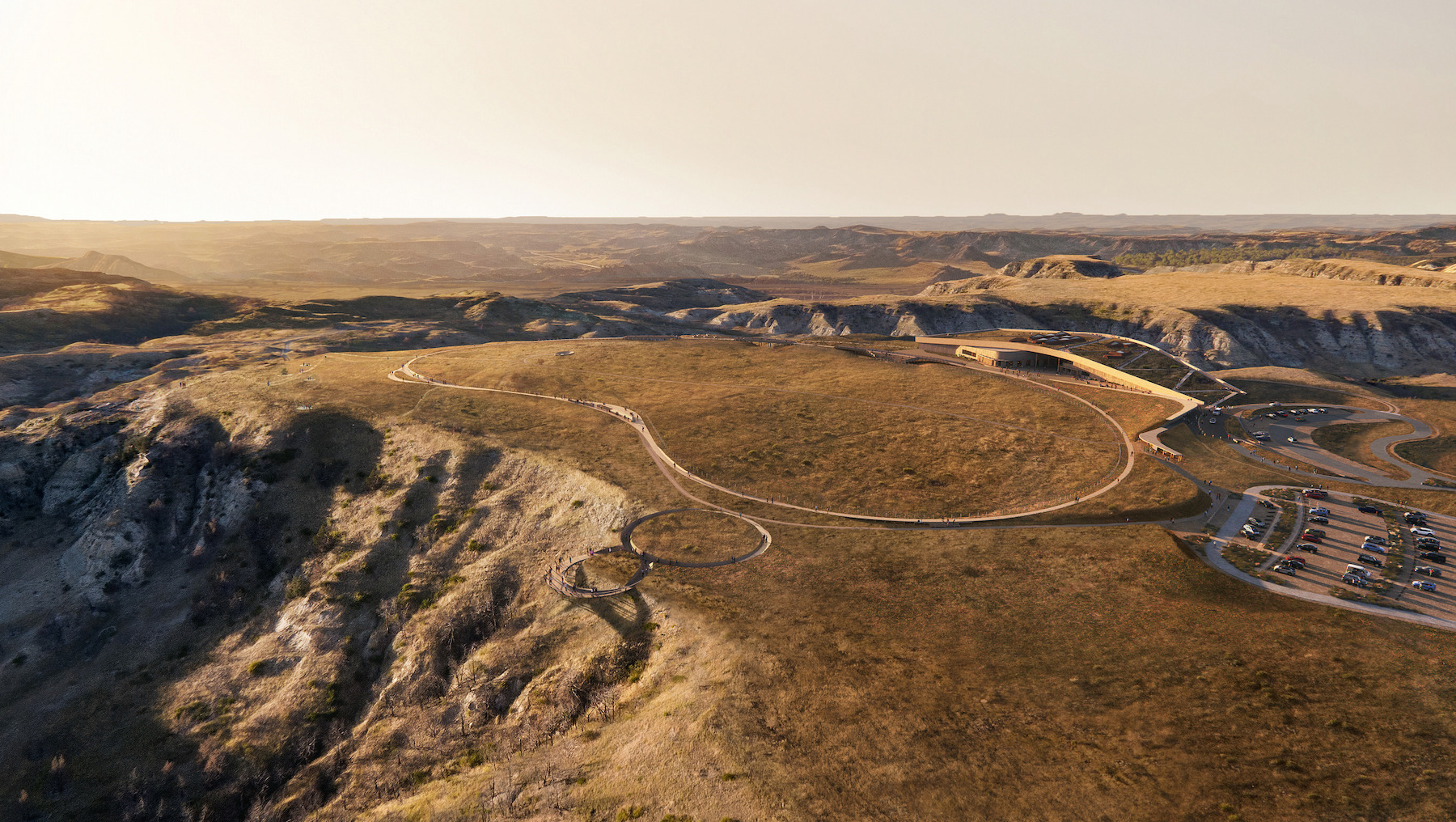
Mass timber is a significant component in the construction of the Library. The Mercer Mass Timber subsidiary of Mercer International is providing nearly 1,800 cubic meters of cross-laminated timber and glulam––harvested from sustainably managed forests––which are being used for the building’s structure that includes a green walkable roof, as well as a one-mile-long boardwalk loop in front of the Library that aligns with the roof’s curvature.
The green roof aims to restore the vegetation disrupted within the building’s footprint, and to create a habitat for native plants. The Library is sponsoring this Native Plant Project in partnership with Resource Environmental Solutions, the nation’s largest ecological restoration company; and North Dakota State University.
Within the Library there will be “narrative galleries,” as well as community spaces, a café, and an auditorium, which the Times pointed out would be large enough to host candidate debates during presidential election campaigns.
The Library “represents a transition we’re seeing in modern library and architectural design, where community spaces are being constructed with long-term sustainability in mind,” said Nick Milestone, Mercer’s Vice President of Projects and Construction, in a prepared statement.
In partnership with the project’s general contractor JE Dunn Construction, Mercer is providing mass timber design assistance, materials, and coordination and logistics. Other AEC firms involved in this project: Snøhetta (design and landscape architect), JLG Architects (AOR), Seagate (mass timber installation), Magnusson Klemencic Associates (Engineer of Record), and Command Industires (steel subcontractor).
The Library––which is four and a half hours north of Mount Rushmore and seven hours northeast of Yellowstone National Park––is targeting LEED Platinum and Living Building Challenge certifications. Its goal is to be net-zero energy, emissions, water, and waste.
Related Stories
Sponsored | Cladding and Facade Systems | Mar 24, 2015
Designers turn a struggling mall into a hub of learning and recreation
Architects help Nashville government transform a struggling mall into a new community space.
Retail Centers | Mar 10, 2015
Retrofit projects give dying malls new purpose
Approximately one-third of the country’s 1,200 enclosed malls are dead or dying. The good news is that a sizable portion of that building stock is being repurposed.
| Jan 2, 2015
Construction put in place enjoyed healthy gains in 2014
Construction consultant FMI foresees—with some caveats—continuing growth in the office, lodging, and manufacturing sectors. But funding uncertainties raise red flags in education and healthcare.
| Dec 29, 2014
Spherical reflectors help spread daylight throughout a college library in Portland, Ore. [BD+C's 2014 Great Solutions Report]
The 40,000-sf library is equipped with four “cones of light,” spherical reflectors made from extruded aluminum that distribute daylight from the library’s third floor to illuminate the second. The innovation was named a 2014 Great Solution by the editors of Building Design+Construction.
| Dec 28, 2014
AIA course: Enhancing interior comfort while improving overall building efficacy
Providing more comfortable conditions to building occupants has become a top priority in today’s interior designs. This course is worth 1.0 AIA LU/HSW.
| Nov 10, 2014
Herzog & De Meuron unveils plan for National Library of Israel
The library’s new home will be a completely new building in Jerusalem, and will combine the functions of a central research center, a venue for indoor and outdoor cultural and educational activities, and a place for digital experience.
| Oct 16, 2014
Report: How to keep public libraries relevant in a digital age
Public libraries will avoid being relegated to the scrap heap of history in a digital age as long as they continue to serve as platforms for learning, creativity, and innovation that strengthen their communities, according to a new Aspen Institute report.
| Oct 16, 2014
Perkins+Will white paper examines alternatives to flame retardant building materials
The white paper includes a list of 193 flame retardants, including 29 discovered in building and household products, 50 found in the indoor environment, and 33 in human blood, milk, and tissues.
| Oct 15, 2014
Harvard launches ‘design-centric’ center for green buildings and cities
The impetus behind Harvard's Center for Green Buildings and Cities is what the design school’s dean, Mohsen Mostafavi, describes as a “rapidly urbanizing global economy,” in which cities are building new structures “on a massive scale.”
| Oct 12, 2014
AIA 2030 commitment: Five years on, are we any closer to net-zero?
This year marks the fifth anniversary of the American Institute of Architects’ effort to have architecture firms voluntarily pledge net-zero energy design for all their buildings by 2030.


